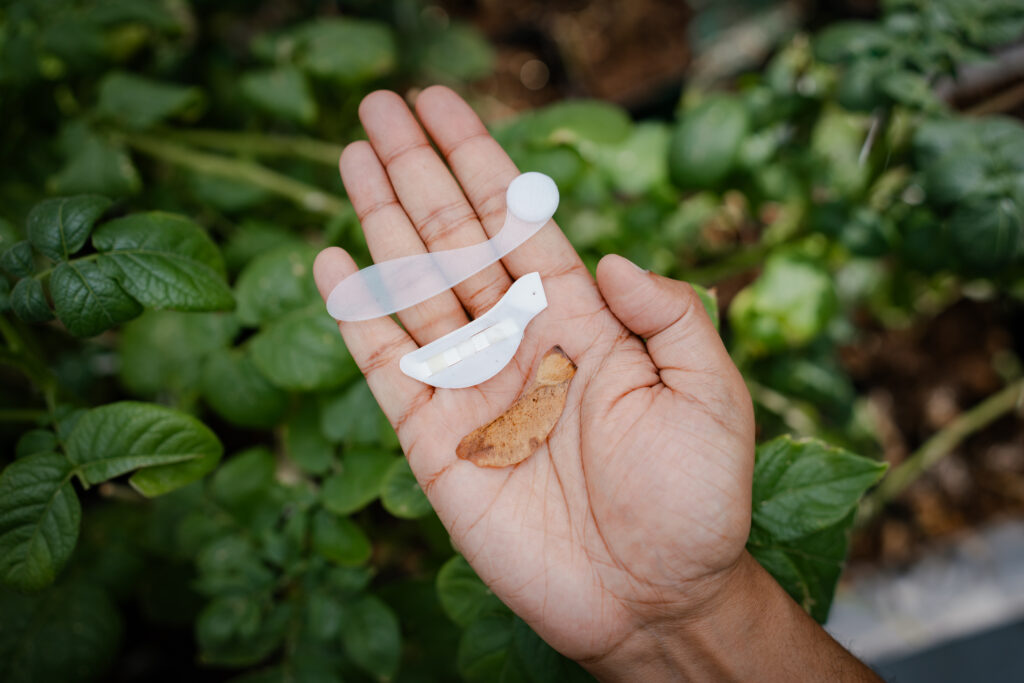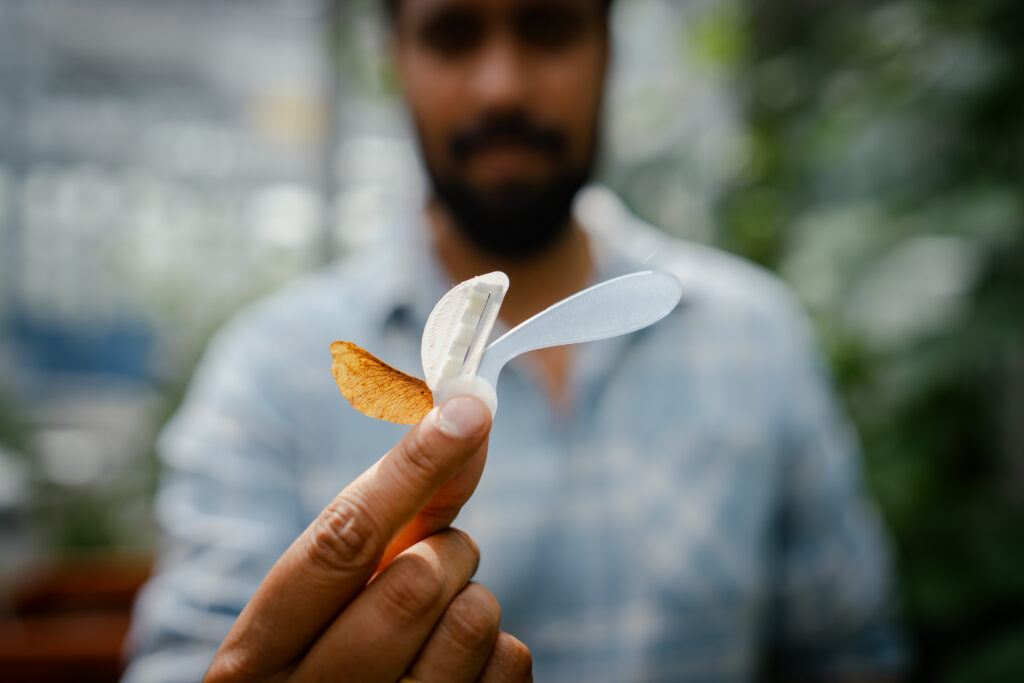Flying Seeds Inspires Next-Gen Environmental Sensor Designs
Scientists from CATRIN at Palacký University have presented a new vision of lightweight, energy-efficient, and autonomous sensors that could represent a breakthrough in collecting key environmental data on Earth and for planetary research in the journal Trends in Biotechnology. The new systems are inspired by nature, specifically by plant seeds that are spread by the wind over long distances. The scientists proposed this vision in an opinion article with state-of-the-art technologies, including 3D printing, flexible electronics, artificial intelligence, origami-inspired folding mechanisms, and photovoltaic cells.
“Like winged maple seeds or dandelion seeds equipped with parachute-like fluff, the proposed sensors would use aerodynamic properties for a slow and stable flight. This would allow them to be dispersed over a large area and collect data on temperature, humidity, and soil quality. Unlike conventional rigid electronics, these sensors are lightweight, environmentally friendly, and can be made from biodegradable materials using a combination of natural and synthetic materials via 3D printing. This makes them inexpensive to mass-produce and environmentally friendly,” said the lead author Sagar Arya of CATRIN.
Another novelty in the presented vision is the use of artificial intelligence, which would enable the sensors to optimize their flight paths, process data in real time, and adapt to changing conditions. Further progress will enable the use of local energy sources such as wind or solar radiation, ensuring long-term functionality of the systems without external sources.


These “flying seeds of the future” may find applications in agriculture, forest restoration, and climate monitoring. However, their potential may not end on Earth. Similar technologies could one day help explore other planets, such as the surface and subsurface of Mars. By combining biological inspiration and technological innovation, these biohybrid systems represent a fundamental shift in the approach to environmental protection and interplanetary exploration and may open new possibilities for a sustainable future,” said another of the authors, Lukáš Spíchal, hinting at where the development of biohybrid sensors could be headed.
The current use of these biohybrid sensors already demonstrates their transformative potential. On Earth, they assist in ecological restoration, for example by supporting seed dispersal during reforestation in degraded ecosystems where natural regeneration is limited. They are also key to monitoring important environmental parameters such as temperature, humidity, soil pH, and air quality, providing real-time data for precision agriculture and biodiversity conservation.
However, researchers still face a number of challenges that will require extensive collaboration across plant & material science, robotics, and data analytics to solve. “As these technologies continue to evolve, flying seed-inspired sensors could significantly transform environmental monitoring by offering scalable, affordable, and sustainable solutions. On Earth, they could play a crucial role in combating climate change, strengthening ecological resilience, and providing detailed data for the development of sustainable approaches. In the context of space research, they open the way to extremely accurate exploration of extraterrestrial environments and pave the way for future missions to Mars,” Arya explained.
https://www.sciencedirect.com/science/article/pii/S0167779925003233

